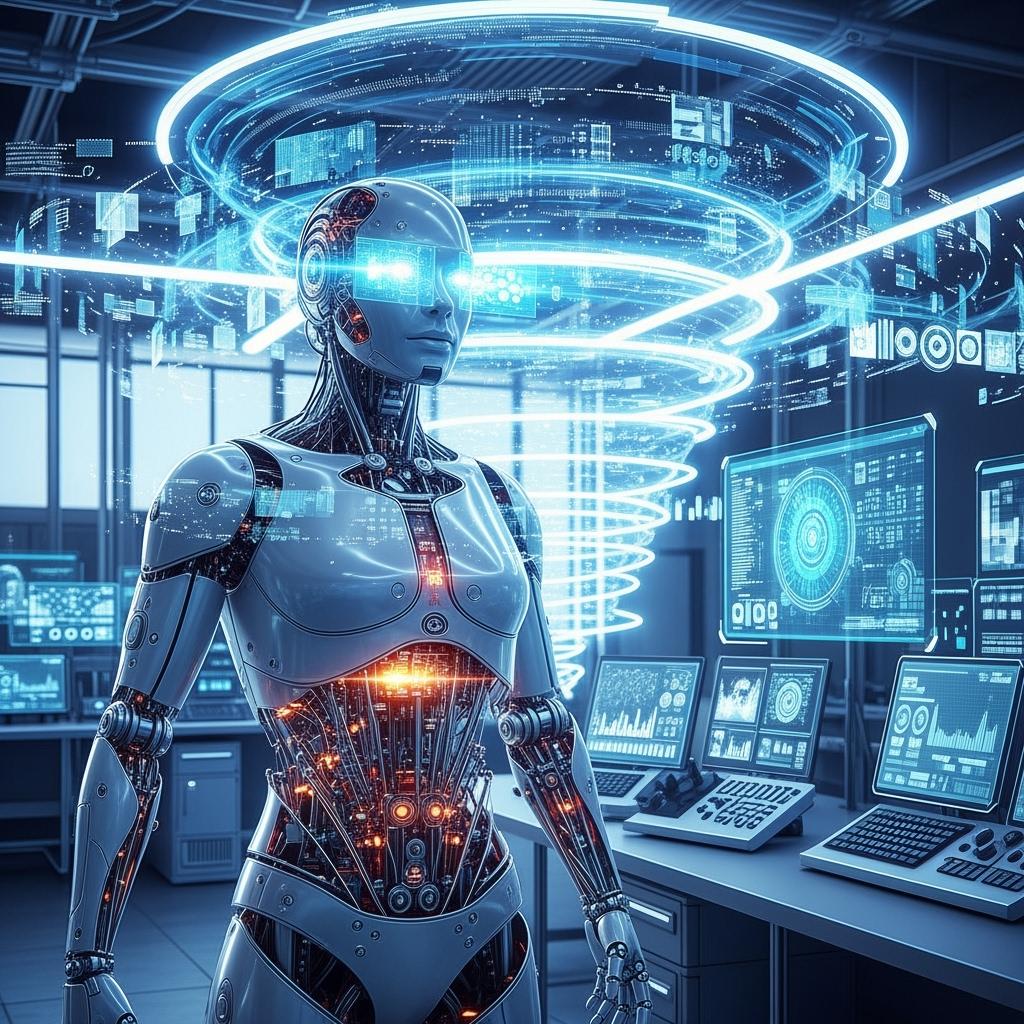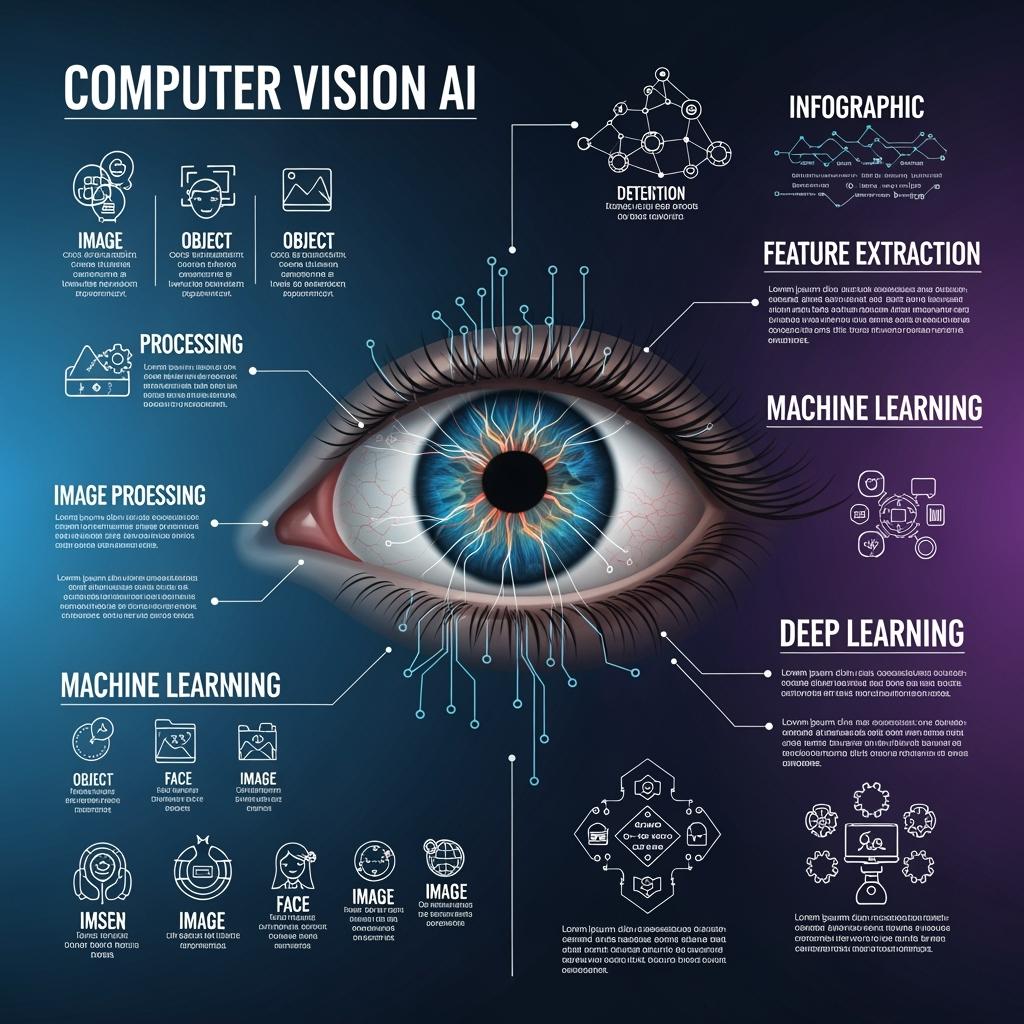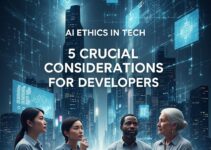
Computer Vision Artificial Intelligence: A Real-World Look into the Future
Introduction
Have you ever pondered deeply how your phone magically unlocks with just a glance of your face or how self-driving cars deftly avoid various obstacles? Machines wield considerable power in computer vision artificial intelligence, a field where they grasp images deeply and intensely somehow. Tech enthusiasts like me have been around for years, and computer vision artificial intelligence has lost its futuristic sheen entirely nowadays. It’s already here, shaping industries from healthcare and altering retail landscapes fairly significantly nowadays. Businesses in the UK and USA rapidly invest heavily in artificial intelligence involving computer vision, automating everything from factory quality control to airport facial recognition.
What Is Computer Vision?
Computer vision essentially entails machines interpreting visual data fairly accurately and deriving meaningful insights from it quite effectively nowadays. Machines are enabled with artificial intelligence capabilities that facilitate interpretation of images and video through complex computational processes.
Core Concepts
Computer vision drives everything from pollutants being tracked on Instagram to automated security systems operating quietly in the background everywhere. Image bracket and object discovery alongside segmentation and pattern recognition form core concepts deeply embedded in computer vision functionality somehow.
History
Computer vision artificial intelligence pops up everywhere; hospitals descry cancer with it, and retailers analyze paperback sales pretty thoroughly nowadays. This tech is changing lives right now. Cameras or detectors capture images or videotape, kicking off the process with initial input prep occurring subsequently underground somehow in darkness.
Real-World Uses
Computer vision artificial intelligence pops up everywhere; hospitals descry cancer with it, and retailers analyze paperback sales pretty thoroughly nowadays. This tech is changing lives right now. Cameras or detectors capture images or videotape, kicking off the process with initial input prep occurring subsequently underground somehow in darkness.
How It Works
Image Input & Prep
Inputs get gutted quite brutally and resized weirdly, like when you’re prepping veggies for some crazy complicated recipe.
Feature Extraction
Algorithms detect patterns, including edges, shapes, and colors, during subsequent processing stages with remarkable speed. Specific features make them stand out pretty much like we lavishly fête a friend’s face with enthusiastic celebratory fanfare.
ML & Deep Learning
Somewhat magically, train systems are ameliorating over time quietly underneath. Deep literacy leverages neural networks eerily inspired by human cognition, making sense of tattered visual data amidst copious ambient noise.
Core Components

Cameras & Sensors
Data absence renders analysis utterly futile. We start with fancy detectors and high-quality cameras gathering accurate visual input from various sources rather quickly.
Hardware
GPUs address edge bias and handle data quickly, working with essential hardware at a speed that surpasses CPUs. Further power yields better vision.
Software
Libraries like PyTorch and TensorFlow make computer vision models ridiculously easy for pretty much anyone to create nowadays.
Top Techniques
Object Discovery
Object discovery employs top techniques that spot particulars in images and label them fairly accurately with varying degrees of success.
Image Segmentation
Tagging folks in pics is kind of like super-fast with barely any fuss at all, apparently. Carves images into salient regions pretty effectively for illustrative purposes, separating a road starkly from an adjacent sidewalk.
Face Recognition
Technology permeates modern life, appearing in everything from smartphones operating under cloak of darkness to heavily surveilled airfields.
OCR (Optical Character Recognition)
Machines can decipher published or handwritten textbooks quite accurately with optical character recognition, useful in surveying loads of old documents or rephrasing faded roadside signs.
3D Reconstruction
Reconstruction in three dimensions happens by extracting depth and perspective info from images that are quite flat ordinarily. It brings digital worlds to life vividly in various applications such as games, virtual reality installations, and artistic endeavors.
Impact by Industry
Healthcare
Currently, artificial intelligence empowers medical professionals within the healthcare sector to identify tumors with remarkable accuracy or to examine X-rays with exceptional care. Daily lives are saved by this tech
Self-Driving Cars
Vehicles now “see” roads, climbers, and signs, navigating better than ever
Manufacturing
AI manufacturing systems pinpoint defects, swiftly cutting production costs.
Retail
Retailers are leveraging vision pretty heavily nowadays for stuff like shelf shadowing and client analytics, optimizing entire shopping experiences quite effectively.
Key Challenges
Data Issues
Subpar quality or biased data results in inadequately trained models, compounded by complex data issues that emerge as significant obstacles. Different datasets remain rather pivotal mostly.
Computing Power
Real-time analysis demands massive computing coffers, a hedge for lower enterprises.
Ethics & sequestration
Face shadowing and surveillance raise deep enterprises. We must balance invention with rights.
Model trustability
AI still struggles in strange situations.
Trends Edge & Real-Time AI
Processing data locally speeds up decision-making—great for mobile and IoT bias.
Multimodal Vision
Combining vision with audio or a textbook helps machines better understand the environment.
Explainability
We need to know how opinions are made—especially in healthcare and law enforcement.
3D Vision Advances
New depth-seeing technologies will make everything from gaming to surgery more precise.
Conclusion
In short, computer vision and artificial intelligence aren’t just machines fetishizing images but rather empowering society with wonky tools that see and act accordingly. You’re part of this wild ride whether you’re some tech-obsessed Londoner or software wizard conjuring up innovations in New York City. We are swiftly advancing into a profoundly transformed world in which artificial intelligence not only processes data but also possesses a remarkable ability to understand information in some capacity.
Recommendation & Opinion
Start digging into Python and mess around with OpenCV if you’re gunning to venture into this realm or land a gig therein. Remain pretty damn curious. Future looks straight at you with unnerving intensity.
✅ Popular FAQs (Google Style)
Q1. What’s computer vision artificial intelligence used for?
A1: It is used for face recognition, medical imaging, tone-driving buses, surveillance, and more — helping machines “see” like humans.
Q2. How does computer vision work with AI?
A2: It processes visual data using algorithms and deep literacy, forming patterns and making intelligent opinions.
Q3. Is computer vision AI the same as facial recognition?
A3: No—facial recognition is just one fashion. Computer vision covers a broader range of tasks, like detecting objects or segmenting images.

